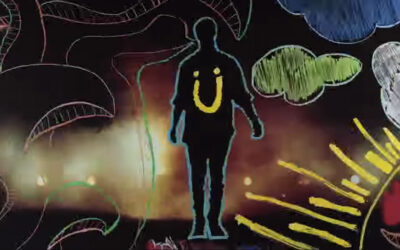Kypski
Former DMC Champ Kypski Discusses New Technique, ‘Syntablism’

Thomas Elbers a.k.a. Kypski started out as a turntablist, becoming a three-time DMC Netherlands champion. Eventually, he followed his heart and entered the realm of sound design, music composition, and production, where he has collaborated with artists in almost every genre.
Now, Kypski is experimenting with “syntablism,” a new technique that enables turntablists to create and manipulate sounds on the fly using a turntable, mixer, and modular synthesizer. It was introduced by Luigi SirCut Comito in 2016.
DJcity’s DJ TLM recently spoke with Kypski to learn more about the technique. The Q&A coincides with the release of Kypski’s new routine, which is a syntablism flip of his remix of Fatima Yamaha’s “What’s a Girl to Do.” The video was praised by his fellow Dutchman, Laidback Luke, who tweeted that it “mesmerized” him.
Watch the routine and read the interview below.
How did you get involved with syntablism?
Luigi SirCut introduced it to me. It was so inspiring! When I realized the potential it opens up for turntablists, I was hooked and dived in right away. It also came at a time when I was kind of bored with manipulating samples and pre-producing my own sounds to scratch with later, which is something so many people do. Syntablism is all about creating sounds in the moment, and scratching and playing them at the same time.
The system I have now is far from finished. I doubt I will ever really finish it. I have many more features I want to add to it and then release a full syntablism album. Until that time comes, I will be releasing a lot of singles and videos. Luigi and I have just finished another syntablism live video in which we will be playing and scratching our systems together in a more Q&A fashion.
If Luigi hadn’t introduced it, someone else might have, because the concept is so brilliant yet simple. It’s great to see more and more people trying out syntablism all over the world now.
What equipment do you need to start experimenting with syntablism?
A modular synthesizer is ideal because it’s not prewired like a regular synth. However, a semi-modular like the Korg MS-20 will do the job. Also, I consider an envelope follower, comparator, and pitch to be key modules. You can build the rest around them. My system is set up so that my Traktor control signal plays a sine wave, which is converted to pitch control voltage. I send that voltage to many different destinations. For example, at the beginning of my new video, I scratch the tail of the reverb. It can be anything! Also, the crossfader is set up so that it produces gate signals, another signal which the modular synth is happy to receive. Together, it gives one the possibility to scratch the core elements of the synth in real time.
You’ve done turntablism collaborations with DJs such as D-Styles and musicians like the Matangi Quartet. Do you have any syntablism collaborations planned?
Yes, this year I will be collaborating with the Amstel Saxophone Quartet from Amsterdam, with whom I will be playing a live show honoring Kraftwerk. I will also be bringing my syntablism live set to the Eurosonic festival in Groningen, Netherlands, and to the Superbooth festival in Berlin, which I’m really looking forward to. For collabs and shows that need a more traditional DJ approach, I use my Native Instruments Maschine setup which still works like a charm for that purpose.
Related: Watch: Turntablist and Singer Asian Hawk Performs His Track ‘Fire’
Popular
-
May 23, 2023
The Best Remixes for Wedding DJs 2023

Wedding season has arrived! DJcity’s Remix Director Sir Marcus has put together a list of wedding-friendly tracks guaranteed to freshen up your DJ sets and...
-
December 22, 2023
Our Biggest Sale of the Year: Join DJcity for $1 🚨

We just launched our biggest sale of the year! Get 90% off a DJcity membership and join for just $1 (regular price $10) for the first month when you check...
-
February 15, 2022
New DJcity Pricing Plans Now Available

Here at DJcity, customer satisfaction is crucial, and therefore we always take input and feedback from our customers and DJ community very seriously. Due t...
-
December 18, 2023
Top 30 Remixes, Bootlegs, and DJ Edits of 2023

ATCG. Last Thursday, DJcity revealed its most downloaded tracks of 2023. Today, we dive deeper to uncover the most popular remixes, bootlegs, and edits of...
-
April 12, 2024
New and Notable Tracks: Apr. 12

New tracks that DJs should know about.
-
July 6, 2022
Afrobeats and Dance added as Main Genres on DJcity

At DJcity, we are always working to make sure that the way our record pool functions reflects the needs of our users. Therefore in our latest update, we sw...
-
June 4, 2020
50 Cent’s ‘In Da Club’ Remixed by Mr. M!X: DJcity Exclusive

Mr. M!X. (Source:Instagram) Dutch DJ/producer MR. M!X has delivered a remix of 50 Cent's birthday anthem "In Da Club." The moombahton-inspired flip is avai...
-
June 29, 2015
Skrillex and Diplo Drop ‘Where Are U Now’ Video Feat. Justin Bieber

Some fans were skeptical when they discovered that Skrillex and Diplo's debut Jack U album includes a song with Justin Bieber. "Where Are U Now" has...
-
December 20, 2022
Top 30 Remixes, Bootlegs, and DJ Edits of 2022

GRAYMATTER. Yesterday, DJcity revealed its most downloaded tracks of 2022. Today, we dive deeper to uncover the most popular remixes, bootlegs, and edits o...
-
December 29, 2020
Top 30 Remixes, Bootlegs and DJ Edits of 2020

James Hype. Yesterday, DJcity revealed its most downloaded tracks of 2020. Today, we dive deeper to uncover the most popular remixes, bootlegs, and edits o...

